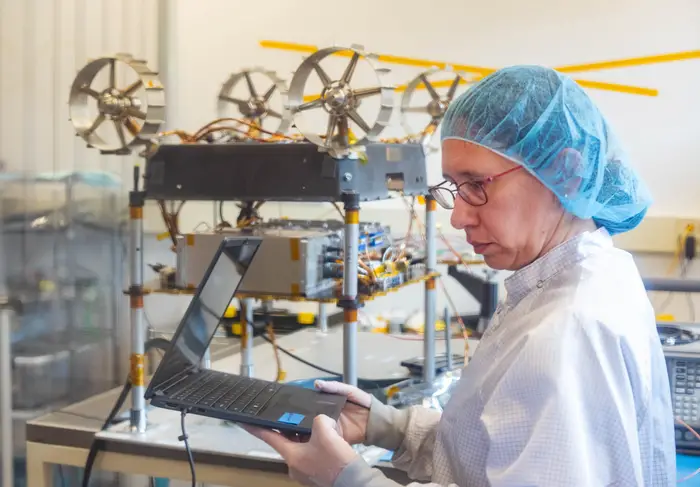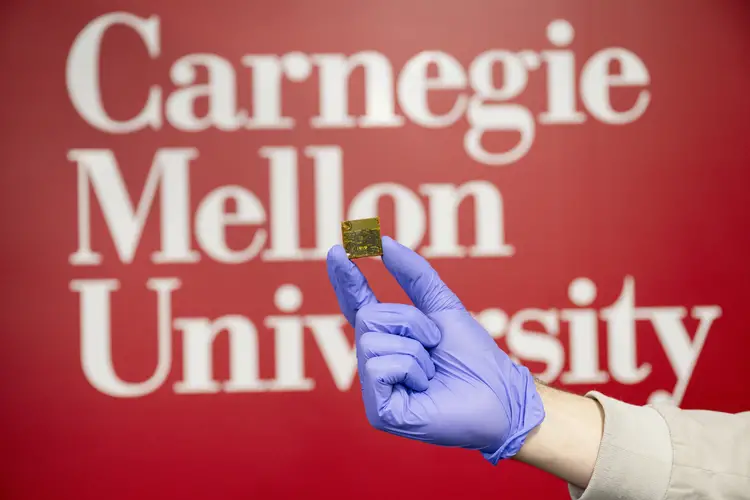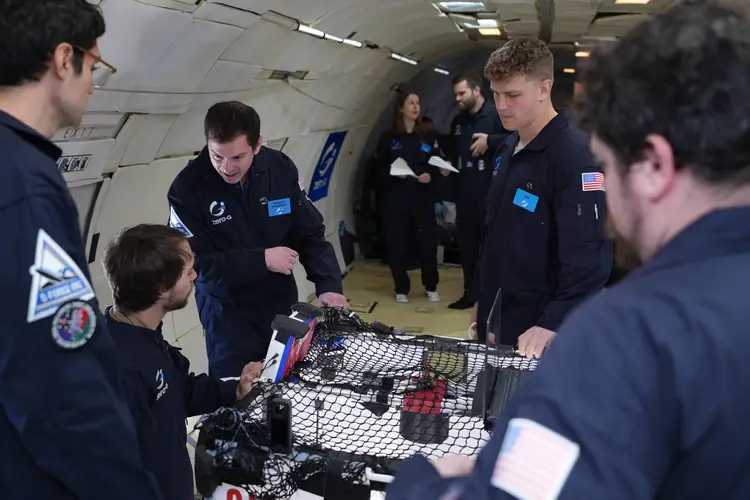
Carnegie Mellon’s MoonRanger Slated To Fly on 2029 Lunar Mission
Suitcase-sized autonomous rover to study water on the moon
Media Inquiries
NASA has tapped a lunar rover built at Carnegie Mellon University to advance our understanding of water on the moon as it autonomously explores near the lunar south pole.
MoonRanger(opens in new window) will be among the payloads aboard a 2029 mission to the moon. The rover will carry a neutron spectrometer to study the lunar soil for traces of hydrogen, a good indicator of the presence of water, and demonstrate new levels of autonomous navigation on the moon.
“MoonRanger has the opportunity to show what is possible for autonomous navigation in space,” said David Wettergreen(opens in new window), a research professor in Carnegie Mellon’s Robotics Institute. “This could dramatically increase the efficiency and effectiveness of the next era of space exploration.”
NASA recently announced the company that will complete the delivery to the lunar surface (opens in new window)as part of its Commercial Lunar Payload Services initiative. The mission will use Firefly Aerospace’s Elytra orbital vehicle and Blue Ghost lunar lander.(opens in new window) Firefly, based in Cedar Park, Texas, completed a lunar mission with the Blue Ghost lander in March, marking the first fully successful commercial lunar landing. The lander will carry MoonRanger, as well as a rover built by the Canadian Space Agency and three stationary scientific instruments.
The mission is the first time NASA will use multiple rovers and instruments near the moon's south pole to study the chemical composition of the region in hopes of discovering valuable resources. Finding water on the moon in the form of buried ice could help support future human lunar missions and settlement and the production of fuel to launch missions deeper into space.
“We are thrilled to have this ride,” said Red Whittaker(opens in new window), the Founders University Research Professor Emeritus in the RI and a driving force behind MoonRanger and planetary exploration at CMU. “After years of planning and development, the project turns real and becomes a mission when you get a ride like this.”
The Carnegie Mellon team, led by Whittaker, Wettergreen and Heather Jones,(opens in new window) a senior project scientist in the RI, has worked with CMU spinout Astrobotic throughout the development process. NASA awarded Astrobotic $5.6 million for MoonRanger in 2019, and the Pittsburgh-based company serves as the prime contractor on the project. Additional funding is expected to prepare the rover for its mission.
MoonRanger is about the size of a suitcase and will weigh about 7 pounds on the moon. It has a solar panel that flips up from its top to a 90-degree angle to catch the sun and generate solar power. The team expects the rover to operate during one lunar day, meaning the mission could last for as many as 14 Earth days. MoonRanger is not designed to survive the lunar night.
“A lot of MoonRanger’s route and travel will be based on the science goals of the mission,” Jones said, adding that the CMU team expects to work closely with scientists at the NASA Ames Research Center, which designed the rover's neutron spectrometer. “With the limited amount of time, we have to keep moving to accomplish our objectives.”
MoonRanger carries two sets of stereo cameras, one at the front and one at the back, allowing it to perceive the lunar terrain, build a model of the surface and find a path to a distant goal. The rover can travel from waypoint to waypoint without teleoperation or human intervention. It moves at a consistent pace, unlike past rovers that stopped for long periods before making short moves.
MoonRanger’s steady movements are enabled by a powerful Nvidia processor and advanced, efficient algorithms developed at CMU. It also has a sun compass and uses the angle of the sun to help it navigate.
As rovers go, MoonRanger is small and light. Its mission, however, has the potential to be transformative. Finding water on the moon is essential to establishing a human presence there and for fueling deep space exploration. MoonRanger’s capabilities could also usher in a new era of autonomous science and exploration in space.
“If we succeed, I expect MoonRanger will be able to make the longest, nonstop traverse of any rover,” Wettergreen said.
For now, MoonRanger waits in a clean room in the Gates Center for Computer Science, just down the hall from Carnegie Mellon Mission Control, where the team will conduct the mission once the rover is on the moon. That clean room and mission control will be abuzz with activity over the next 24 months as the MoonRanger team updates the rover and prepares it for delivery to Firefly Aerospace in July 2027. The team has already commenced testing MoonRanger’s systems, and efforts will start soon to build a mission team and begin training for the rover’s time on the moon.
“It’s going to be exciting,” Jones said. “We have a lot to do before launch, and we’re ready to move forward.”







